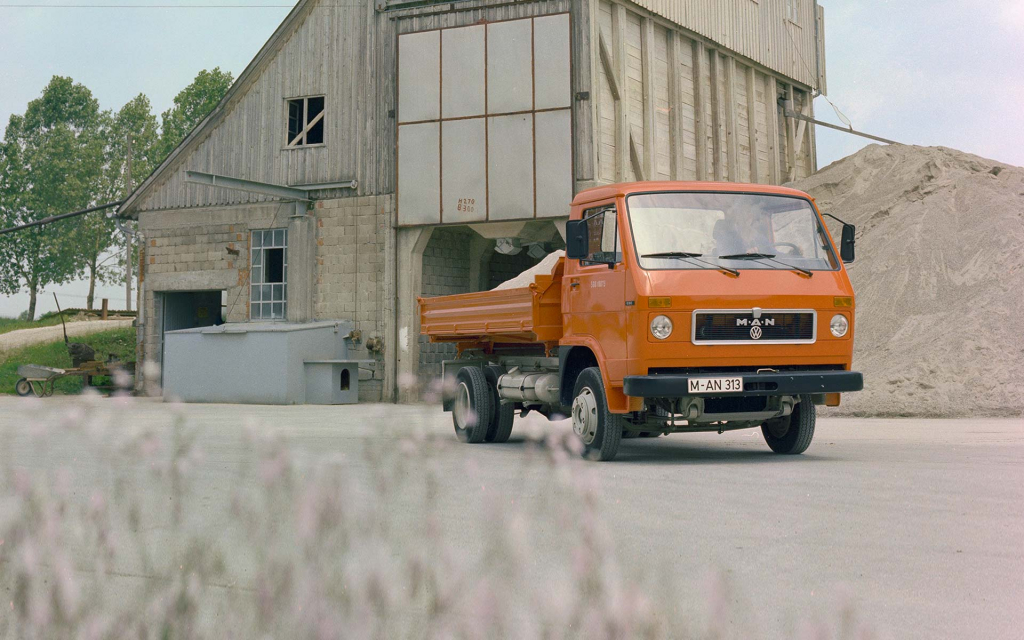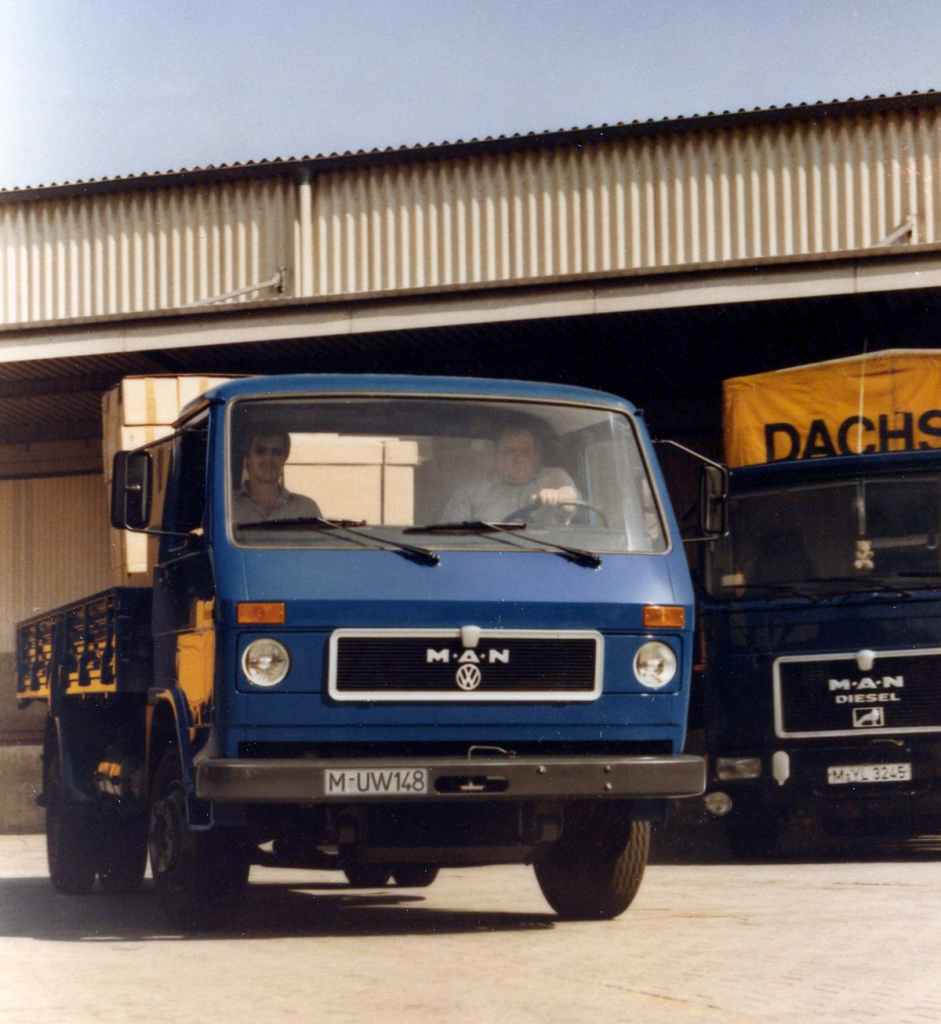
Successful joint production
The G90, manufactured jointly by M.A.N. and Volkswagen, was devised as a model to fill a gap in the truck production programme. It enjoyed a stellar career with 72,000 vehicles constructed and sold.
If you consider this van model in familial terms, the G90 would be the great-great-great grandfather of the MAN TGL in the family of MAN vehicles. The G90 was born out of a joint venture between M.A.N. and Volkswagen that began in 1977 for the 6–9 tonne commercial vehicle class. M.A.N. saw an opportunity to round off its truck range at the lower end, and VW the opportunity to round off its commercial vehicle portfolio at the upper end. Both companies were involved in the development and production processes and also shared the sales functions. Volkswagen’s existing experience in van construction and the well-connected sales and service network in Germany and abroad were hugely advantageous.
Green light for production
After the German Federal Cartel Office had issued the required approval for the collaboration in March 1978, both companies invested tens of millions into their production locations: VW in Hanover and M.A.N. in Salzgitter and Nuremberg. The venture started off with two models, the six-tonne 6.90 and eight-tonne 8.90. Volkswagen developed the cab with tilting mechanism, the five-gear synchromesh gearbox, the rear axle with transmission and the suspension system and electronics for the collaborative series. M.A.N. contributed the chassis, the engine construction, the front axle including the suspension system and steering of the brakes and wheels, a special type of platform body, and the tipper. A quarter of the final assembly process took place at the M.A.N. plant in Salzgitter, but most of it was carried out at the Volkswagen van plant in Hanover.
“Of course, the collaborative efforts were also reflected on the protective radiator grille of the vehicle – where the logos of both companies took their justified pride of place.”
The first vehicles from this collaborative series were announced in 1979 at the Geneva Motor Show and showcased at the International Motor Show in Frankfurt that same year.
A wide range of variants until the G90
The M.A.N.–VW trucks manifested themselves in many different variants – as platform trucks, tippers and with various special bodies – and were to be found predominantly in use in the construction industry, for distribution transport, and in the municipal sector. In 1981, the product range was expanded to include all-wheel-drive vehicles, which were key in helping the G-series to establish its good reputation. They enjoyed huge popularity with the German Federal Agency for Technical Relief (THW), the fire brigade and as sturdy military and expedition vehicles.
From 1982 onwards, the entire production process was run from the M.A.N. plant. In 1987, the lightweight trucks were renamed to G90 – based on the F90 heavy series.
In the autumn of 1993, the production of the collaborative series came to a close. By that time, the plant had produced around 72,000 M.A.N.–Volkswagen vehicles. And you still see the odd one or two on our roads today.
Note: Information and pictures are partly taken from the Historical Archive of MAN Truck & Bus SE





